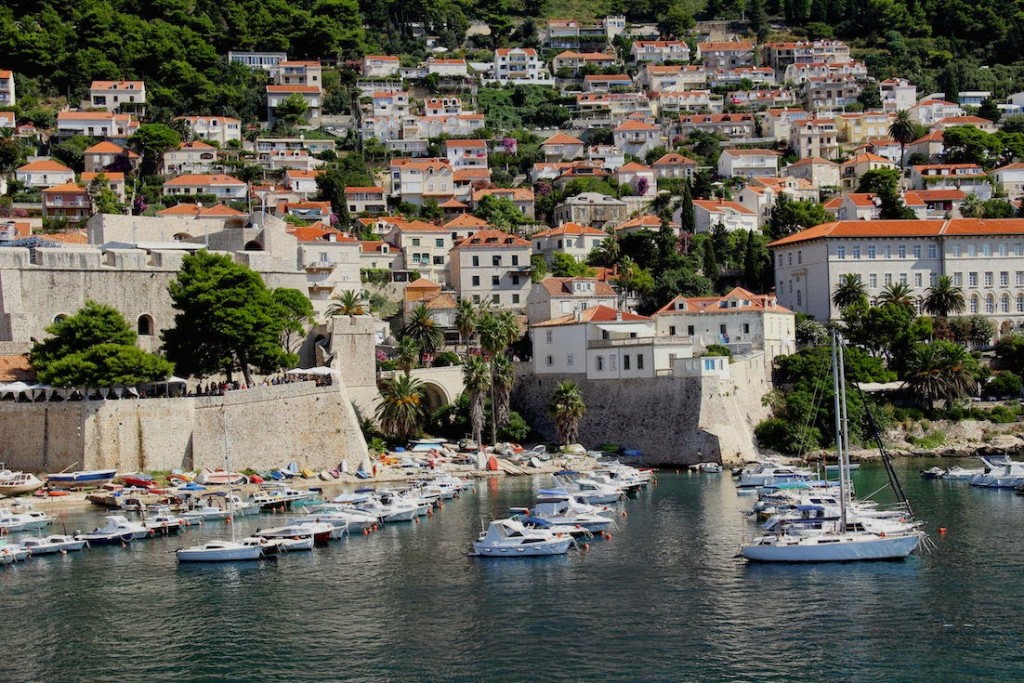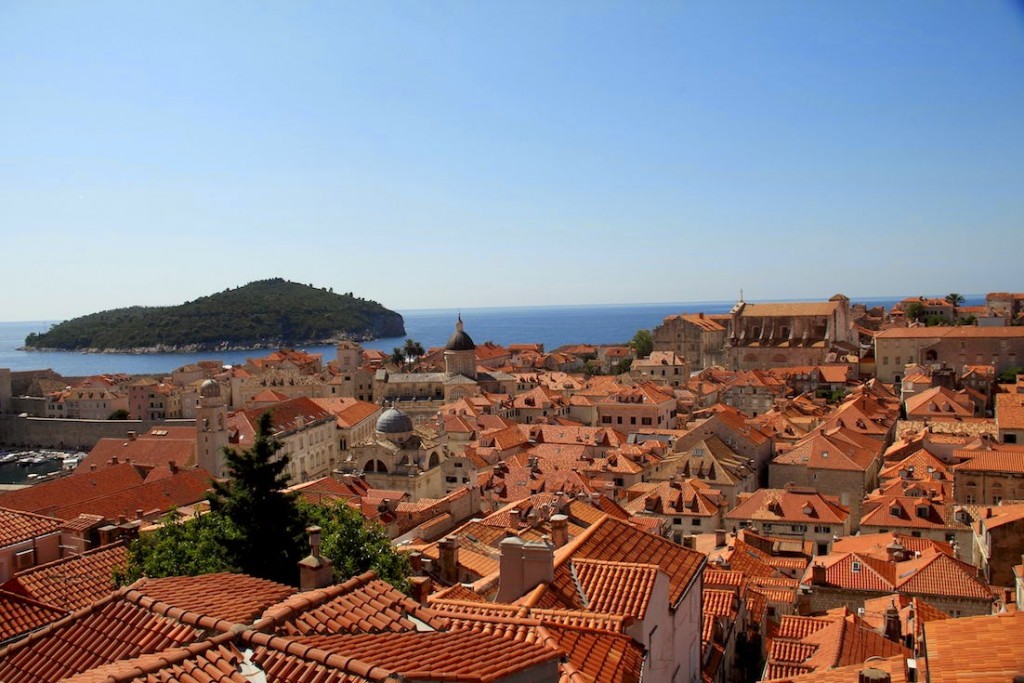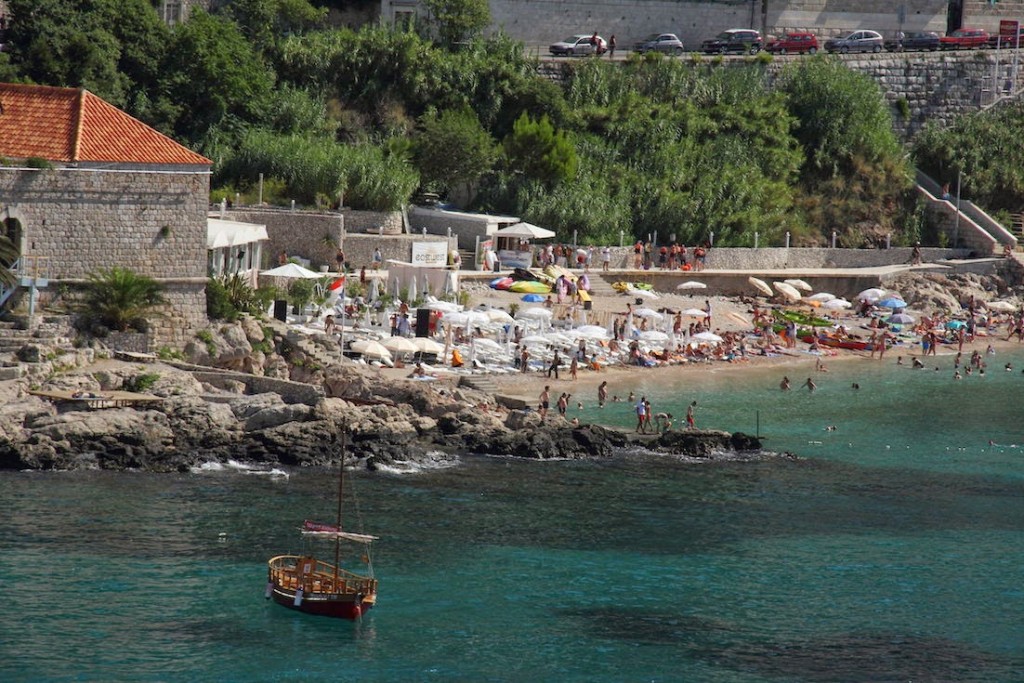Dubrovnik: Walking the City Walls
If you have time and money to spend on only one activity in Dubrovnik – walk the walls of the Old Town! The beauty of the town will make room in your heart and the next time when you see a red tiled roof, you will surely think of Dubrovnik. The blue sea will make you wonder – what lies beyond the vastness and the walls will provide a sense of security making you feel grounded on strong and stable foundations. The emerald island of Lokrum will make you want to swim there to escape all worries in your life – such are the feelings that will bubble in you while ambling along the Dubrovnik walls.
Historical Snapshot
The impressive city walls protect the Old Town within a 2 km circumference. The fortifications include fortresses, bastions, towers and casemates. Records have it that the city walls were constructed even before the 9th century and that they safeguarded the inhabitants from invasions spanning over fifteen months. From the 9th to the 14th century, the walls were strengthened until the Golden Age of Dubrovnik, when the town became an important trading hub.
The walls took their current form after the town was freed from the Venetian rule in the 14th century. Reinforcements and maintenance of the wall continued to protect the town from the Ottoman invasion during later years. The walls were so strong that they were almost unaffected when an extremely strong earthquake rocked and devastated the town in 1667.
Living through history – Walking the walls
If you have read up a little on the ancient and modern history of Dubrovnik, walking the walls will make make you live through centuries. If you let your imagination run wild, events can run past your eyes – construction of the fortifications, evidence of the Venetian rule, threat of the Ottomans, which justify the numerous casemates that you see, and the most recent and painful – struggle for independence.
While we had not done a lot of reading before getting there, the little that we came to know using the audio guide made us salute the spirit of the town which has made it bounce back each time tribulations have hit it. After getting back from Croatia, we have read a little more on the glorious past of the town and our respect for its citizens has grown deeply. While the war for independence has been a fairly recent event (1990’s), Dubrovnik now beams in glory and has taken on the world with the age old charm that it has had since centuries!
Highlights
Here is a list of what you should look out for (what we liked) as you walk the walls:
- Domes of the churches and cathedrals, especially the patina covered dome of the church of St Balise
- Bells of the churches
- View of Banje beach and the quarantine quarters
- Pile Gate, before you climb the walls. There are traditionally clad soldiers here during the evening!
- Emerald island of Lokrum
- Buza Bar – bar with a unique setting
- Bastions and casemates along the wall
- Museum of Croatian War of Independence
- Handicrafts and souvenirs made by the locals
- Sights and scenes of everyday life of the inhabitants of the Old Town
Here are a few pictures that may take you to the walls with us – virtually!
Two cents from my end… Some tips
- The tickets can be bought inside the walls, immediately after entering the Pile Gate.
- Highly recommend taking the audio guide for the tour. The guide is available for ~100KN outside the Pile Gate. If you do not rent the guide, you may miss points that are worth seeing, There are hardly any signs and plaques on any of the forts or bastions.
- Carry a bottle of water. There are a couple of shops on the walls, but water is expensive.
- During summer months, the afternoon is hot. It is best to walk the walls early in the morning or late in the evening. These are also the best times to beat the crowds.
- Buza Bar is a great place to have a drink, sun bathe and jump in the sea. There are two ‘Buza Bars’; we liked the one without the umbrellas and shade.
- The Minceta fortification is small, but interesting to explore.
- Museum of Croatian War of Independence requires a separate ticket, which is available at the entrance of the museum.
As always… send me an e-mail if you need any further details. Glad to help!
Let the travellers’ tribe grow!
Many thanks to the Dubrovnik Tourism Board for facilitating our trip to this charming city.























Very nice article, Sonia. Love your pictures, as well. However, you should change you mistook the name for the the fortress of Revelin (it is on the East side of town), and the picture you posted is of the Fortress Lovrijenac. Your article is very informative, and I already sent it to a dear friend that will be visiting Croatia in a few days. Happy travels….
Hey ….glad you liked it! Just corrected the name of the Fortress!